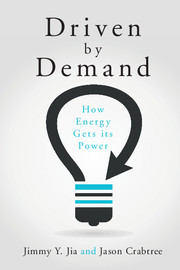Book contents
- Frontmatter
- Dedication
- contents
- List of figures
- List of tables
- Acknowledgments
- Part I Introduction
- Part II Three frameworks
- Part III Critical decisions
- 5 The International Niagara Commission of 1891
- 6 Trash as treasure
- 7 Paying for pavement
- 8 Heat without the hot air
- 9 The collision of two critical infrastructures
- Part IV Energy futurism
- Part V Societal advancement
- References
- Index
7 - Paying for pavement
from Part III - Critical decisions
Published online by Cambridge University Press: 05 June 2015
- Frontmatter
- Dedication
- contents
- List of figures
- List of tables
- Acknowledgments
- Part I Introduction
- Part II Three frameworks
- Part III Critical decisions
- 5 The International Niagara Commission of 1891
- 6 Trash as treasure
- 7 Paying for pavement
- 8 Heat without the hot air
- 9 The collision of two critical infrastructures
- Part IV Energy futurism
- Part V Societal advancement
- References
- Index
Summary
Finland has produced so many brilliant distance runners because back home it costs $2.50 a gallon for gas.
Esa Tikkanen, NHL Hockey Player, 1979The Highway Trust Fund that built the US highway system generates revenue from a federal fuel tax, but is running out of money. According to the Congressional Budget Office, outlays have exceeded revenues by more than $52 billion between 2004 and 2014 (CBO, 2014). The fund is responsible for the construction and maintenance of the highway system in the US. Although the system makes up only 1.1% of the nation's roads, it carries over 24% of the nation's highway traffic and is an important backbone of the country's economy. At the same time transportation makes up nearly 28% of US energy consumption. Infrastructure decisions and land use policy can have a large impact on the energy required to live in a society or a community. This chapter focuses on Washington State, which needs to address many of the same problems faced by the federal government, as a more manageable case study for exploration. In May 2013, the Skagit River Bridge in Washington state was struck by an over-height truck, causing a section of the truss to collapse. Although no one died, it cost over $6 million to repair and caused many more millions of dollars of lost economic output stemming from disruptions to traffic. Bridge collapses are dramatic but far from the only form of roadway failure. Roadway disruptions are common, and much of the existing transportation infrastructure in the US is in dire need of substantial investment. The American Association of Civil Engineers 2013 Report Card for America's Infrastructure gives the nation a D+ and recommends $3.6 trillion dollars in capital investment by 2020. Roads were given a lackluster D rating by the professional society.
Increases in road maintenance costs have plagued Washington and other states for many years. In 2012, Washington faced $10–$50 billion in backlog maintenance and repairs.
- Type
- Chapter
- Information
- Driven by DemandHow Energy Gets its Power, pp. 128 - 148Publisher: Cambridge University PressPrint publication year: 2015



